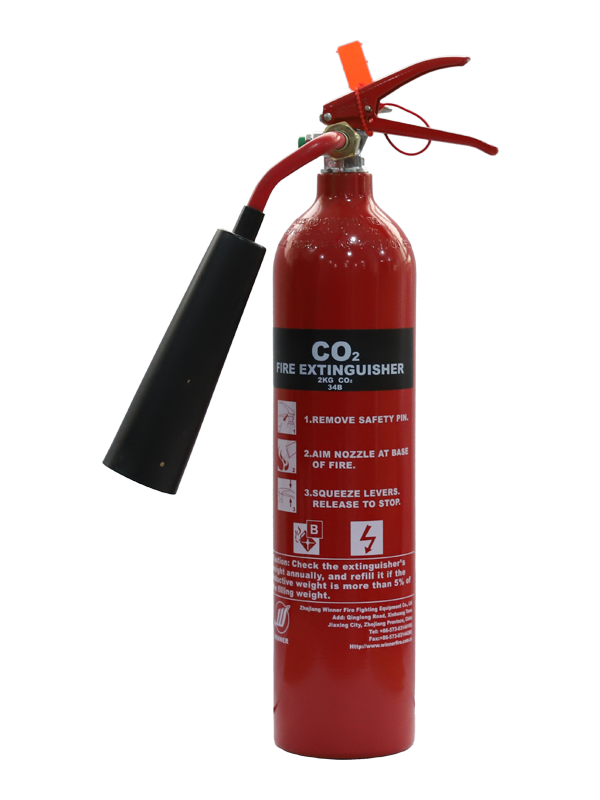Carbon dioxide fire extinguishing agent is a fire extinguisher that uses the filled liquid carbon dioxide to spray out the fire. It consists of a cylinder, a bottle valve, a spray system and other components. It is cheap, easy to obtain and prepare. It mainly relies on suffocation and partial cooling to extinguish fires, and is suitable for putting out various flammable liquids and combustible gases.
1. Basic introduction
Carbon dioxide fire extinguisher is a fire extinguisher that uses the filled liquid carbon dioxide to spray out the fire. It is composed of cylinder, bottle valve, injection system and other components. Divided into: (1) Portable carbon dioxide fire extinguisher. The total weight is less than or equal to 28kg, and its specifications are 2kg, 3kg, 5kg, and 7kg; (2) Cart-type carbon dioxide fire extinguisher. The total weight is more than 28kg, and its specifications are 20kg and 25kg. Carbon dioxide fire extinguishers are suitable for extinguishing all kinds of flammable liquids and combustible gases. And fires of live equipment, precision electronic instruments, and valuable equipment. However, it is not suitable to be used outdoors when there is strong wind. After use in a narrow and confined space, timely ventilation or evacuation of personnel should be carried out to prevent suffocation.

2. Principles of fire extinguishing
The liquid carbon dioxide is compressed in a small steel cylinder when pressurized, and then sprayed out when the fire is extinguished, which has the effect of cooling down and isolating air.
Carbon dioxide fire extinguishers are mainly used to extinguish the first fires of valuable equipment, archives, instruments, electrical equipment below 600 volts, and oil.
3. Scope of application
It has good fluidity, high injection rate, non-corrosive container and non-perishable properties, and is used to extinguish the first fires of books, files, valuable equipment, precision instruments, electrical equipment below 600 volts, and oil. It is suitable for fighting class B fires, (such as kerosene, diesel, crude oil, methanol, ethanol, asphalt, paraffin, etc.) fires. Suitable for fighting class C fires (such as gas, natural gas, methane, ethane, propane, hydrogen, etc.). Class E fires (fires in which objects burn with electricity).
4. How to use
How to use: First pull out the safety pin, then press the pressure handle, and aim the nozzle at the root of the flame to spray. [2]
.Notes: When using, try to prevent the skin from frostbite caused by direct contact with the spray tube and spray hose. When fighting an electrical fire, if the voltage exceeds 600 volts, remember to cut off the power before putting out the fire.